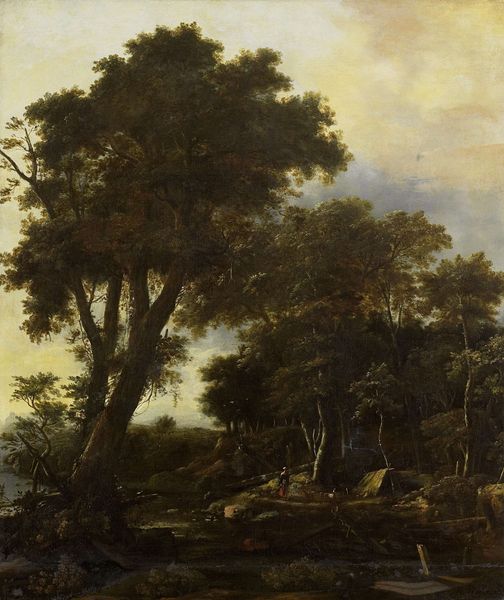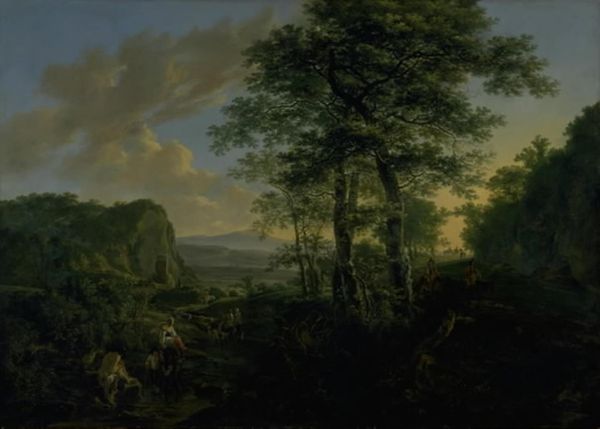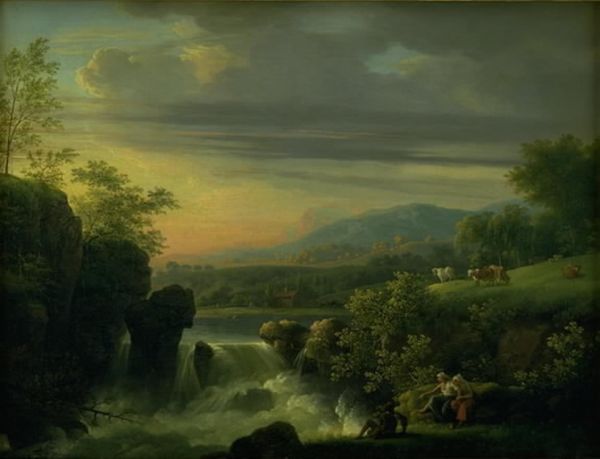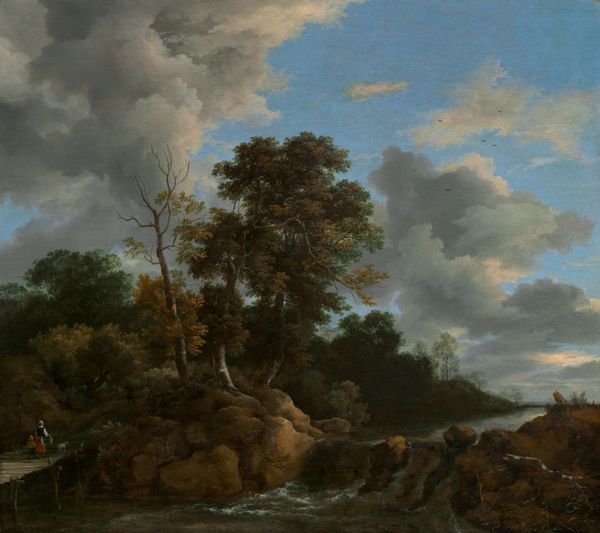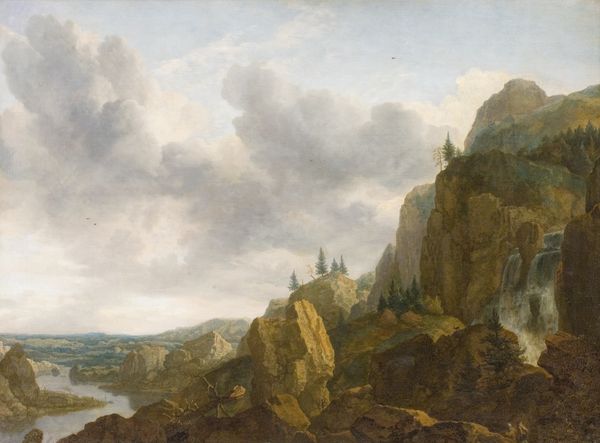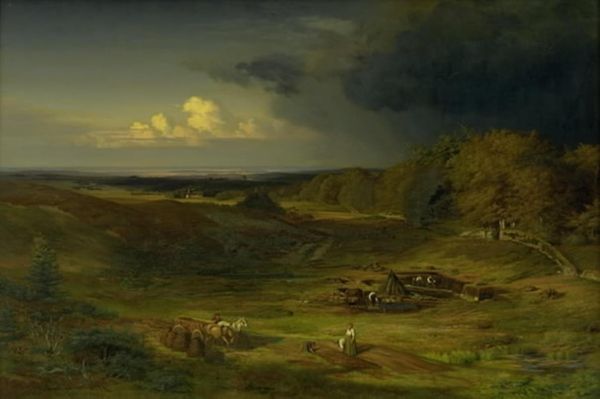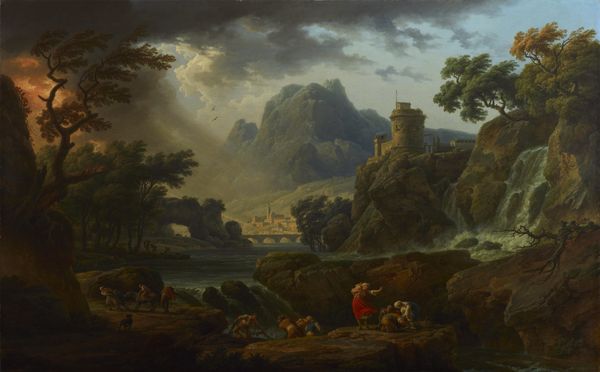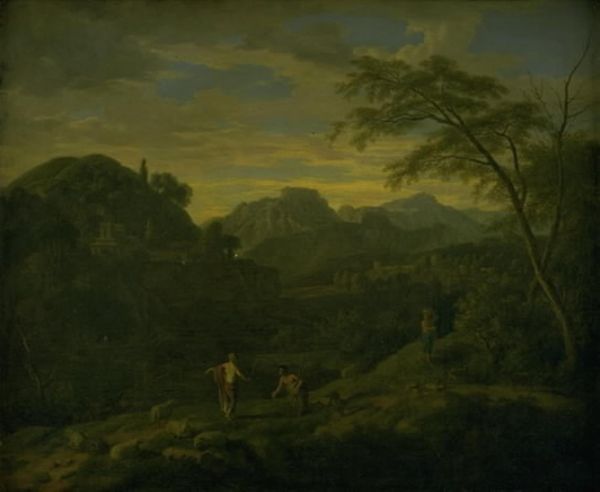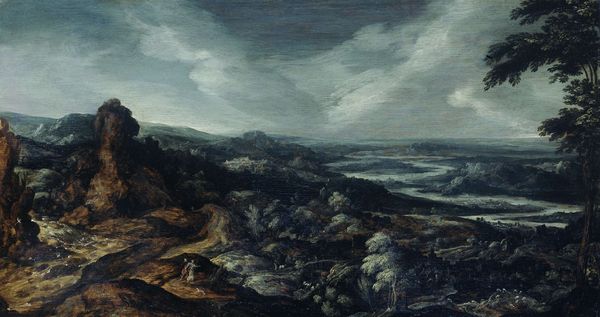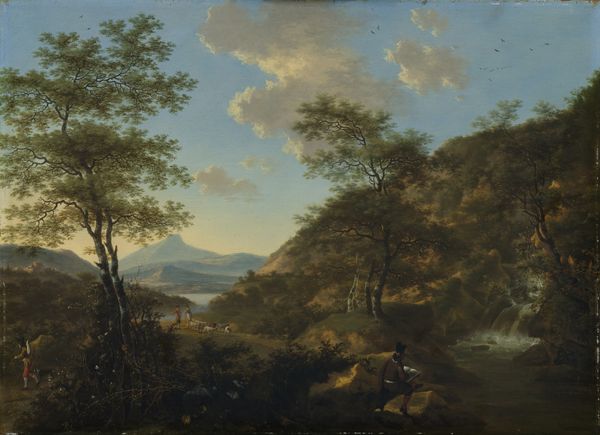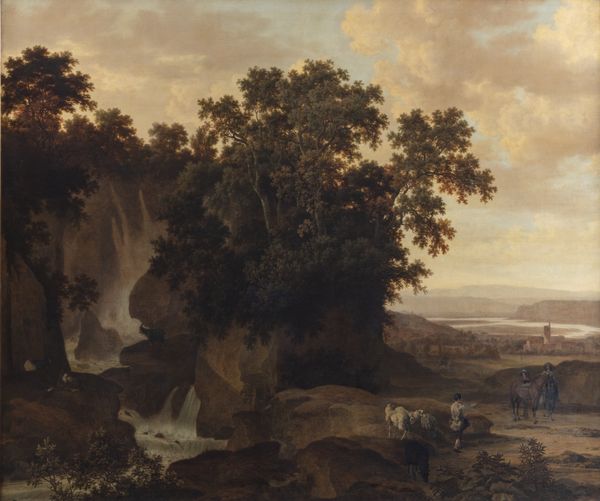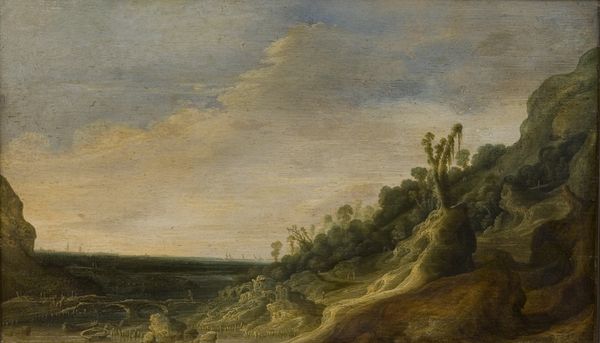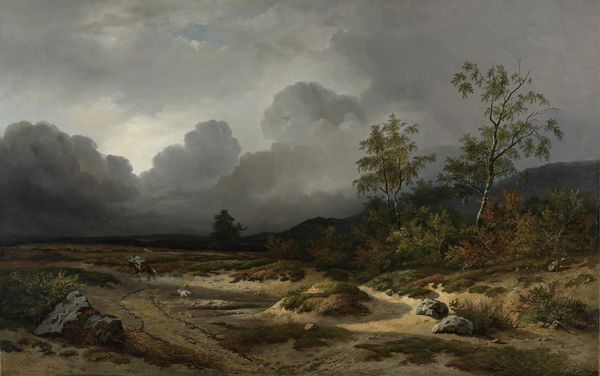
painting, oil-paint, canvas
#
baroque
#
dutch-golden-age
#
painting
#
oil-paint
#
landscape
#
canvas
#
underpainting
#
painting painterly
#
cityscape
#
history-painting
#
realism
Dimensions: 101 cm (height) x 150.5 cm (width) (Netto)
Curator: Welcome! We’re standing before Allaert van Everdingen's "Mountain Landscape with Waterfall," an oil on canvas completed around 1648 and currently held here at the SMK. Editor: It’s immediately striking – the mood is so rugged and almost…imposing? The sheer size of the rocks in the foreground gives you a sense of nature's untamed power. Curator: Absolutely. Everdingen was instrumental in popularizing Scandinavian-inspired landscapes within Dutch Golden Age painting. The materiality, the very paint, becomes almost geological. Look at the layers – it suggests the processes of formation, erosion...a landscape in constant flux. Editor: This landscape is clearly staged for a particular Dutch clientele, wouldn't you agree? These rocky, mountainous scenes, were exotic imports of a kind – a reflection of an expanding worldview informed by trade and colonialism, far removed from the flatlands that constituted much of the Dutch Republic. Curator: Yes, though I think that's perhaps reading into it a little too much. It reflects the Dutch interest in the production of such art as the period of his artistic activity coincided with a time when the Dutch Golden Age was approaching its peak and his art fulfilled the needs of a wealthy middle class who had sufficient means to spend on paintings. And his influence cannot be dismissed, for it can be argued that, without Everdingen, Jacob van Ruisdael, one of the great painters of landscapes, would not have existed. Editor: Maybe. But this reminds me of studies in the postcolonial ecocriticism of representing natural sites. While it looks objectively natural to us, is it an accurate and/or culturally-relative depiction? For whom was this landscape, its particular representation and details, staged for? What sort of natural history might be written with oil, canvas, brush and these patronial relationships that gave him the support and stability to produce it? Curator: True, though let us consider how the pigments themselves may have been sourced - the very labour of their acquisition and preparation would speak to trade routes and the artist's connections, influencing the artistic decisions of Everdingen himself. The material impact would be in his conscious awareness throughout the period in which it was produced, particularly concerning cost and availability. Editor: These perspectives complement each other well here. I appreciate how contemplating art this way connects the seemingly picturesque with material realities of a global economy in the 17th century. Curator: It’s a reminder that art is never created in a vacuum. Thank you for highlighting the ways we must look at it today!
Comments
No comments
Be the first to comment and join the conversation on the ultimate creative platform.
